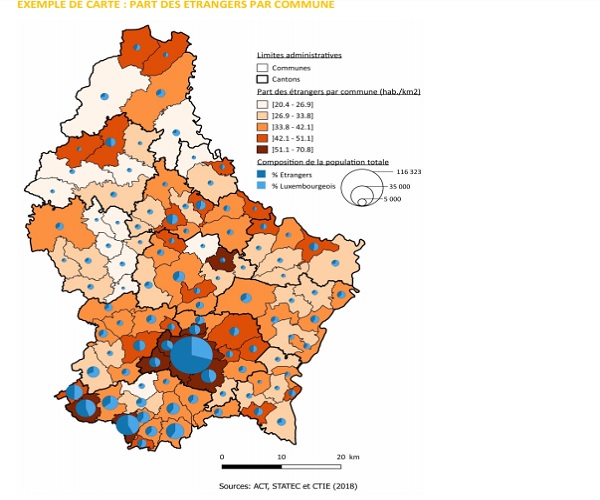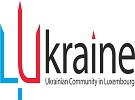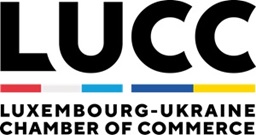 Credit: Statec
Credit: Statec
Luxembourg is the commune with most foreign residents (70.8%), whilst Wahl boasts the least number of foreign residents (20.4%), according to a demographic map of the Grand Duchy's population at the communal level.
The demographic atlas, developed by STATEC, analyses the demographic situation of the Luxembourg population at the communal level. Indeed, Luxembourg has the largest population growth in Europe. Between 1981 and 2018, its population increased by approximately 65%, from 364,597 to 602,005 inhabitants. Inevitably, migration has proven an essential factor of this demographic growth.
The atlas looks at various demographic indicators: birth rate, mortality and mobility. Each includes a brief description and an illustrative map and, thanks to collaboration with the Cadastre and Topography Administration, cartographic representations can be visualised on the national geoportal. For each indicator, a description of the situation of the 102 communes, accompanied by a cartographic representation, allows for an understanding of existing differences between the communes.
Despite the small size of Luxembourg, the different demographic indicators vary greatly from one commune to another. For instance, while the population of the City of Luxembourg was 116,323 as of 1 January 2018, that of Saeul was only 790 people. In terms of the distribution of foreigners, the City of Luxembourg was also in the lead with 70.8%, followed by Strassen (62.3%) and Larochette (58.3%). The communes of Wahl (20.4%), Useldange (21.3%), Reckange-sur-Mess (21.7%) and Goesdorf (21.7%) had the lowest shares of foreign residents.
All maps of the atlas can be observed more interactively on the national geoportal at https://map.geoportail.lu/theme/atlas_demographic.









